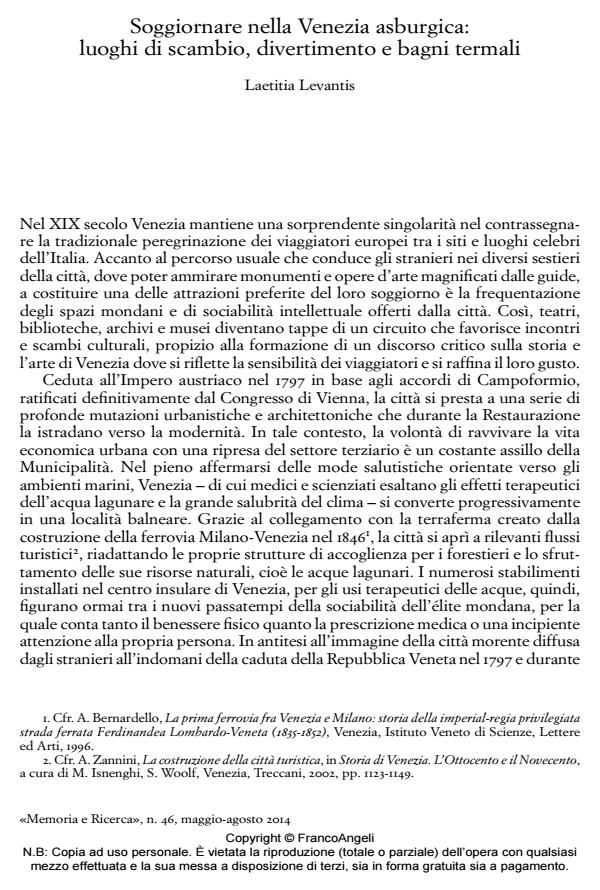Visiting Venice under the Habsburgs: Places, Exchanges, Amusements and Thermalism
Journal title MEMORIA E RICERCA
Author/s Laetitia Levantis
Publishing Year 2014 Issue 2014/46
Language Italian Pages 15 P. 63-77 File size 87 KB
DOI 10.3280/MER2014-046006
DOI is like a bar code for intellectual property: to have more infomation
click here
Below, you can see the article first page
If you want to buy this article in PDF format, you can do it, following the instructions to buy download credits

FrancoAngeli is member of Publishers International Linking Association, Inc (PILA), a not-for-profit association which run the CrossRef service enabling links to and from online scholarly content.
For European travellers visiting Venice during the nineteenth century, theaters, libraries, archives and museums, are spaces for meetings based on the history and art of Venice. Connected to the terraferma by a railway bridge in 1850, the city - ruled by the Austrian Empire since the Congress of Vienna (1814-1815) , developed its own balneary potential. The exceptional properties of lagoonal waters revealed by medical publications draws, until the end of the century, thousands of European patients longing to enjoy the benefi cial effects of the «Venetian cure» in the lagoon. Once denounced as unhealthy, Venice’s water is now extolled and appreciated for its healing properties. With the advent of modern tourism in the middle of the century, bathing as a source of delight progressively supplants bathing for therapeutical effects in the fl oating establishments placed all along the Grand Canal, and in the main hotels of the city.
Keywords: Venice, Habsburgs, Foreign Travelers in Venice, Cultural Sociability, Climatotherapy, T ermalism
Laetitia Levantis, Soggiornare nella Venezia asburgica: luoghi di scambio, divertimento e bagni termali in "MEMORIA E RICERCA " 46/2014, pp 63-77, DOI: 10.3280/MER2014-046006